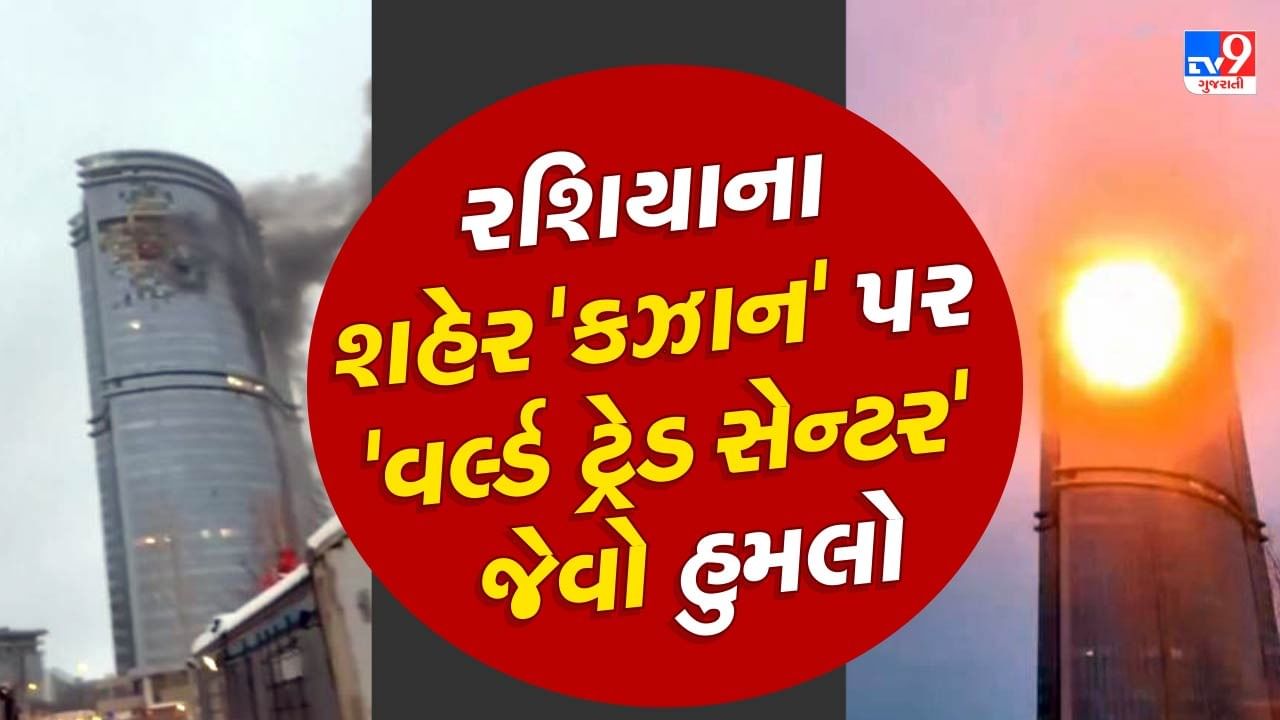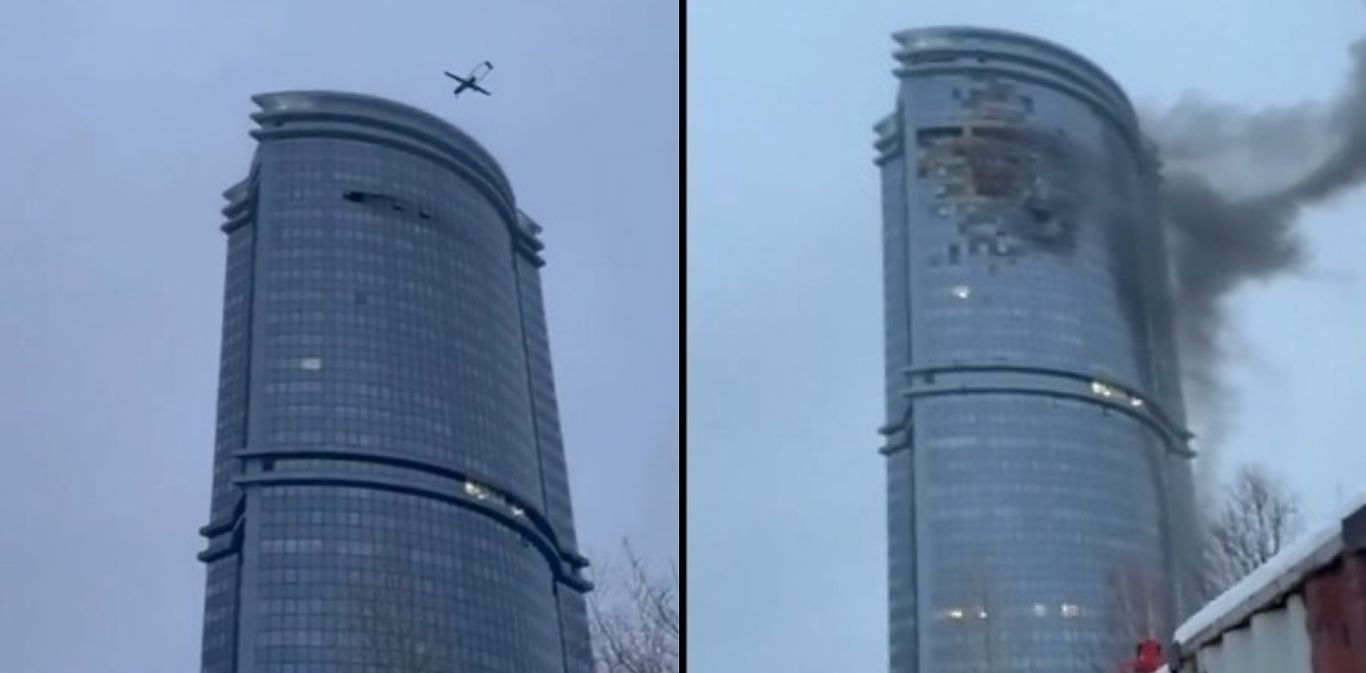Kazan drone attack: The recent incident in Kazan, involving suspected drone strikes, has raised significant concerns regarding regional security and the evolving nature of modern warfare. This event demands careful examination, considering its technological aspects, geopolitical implications, and the responses it elicited. Understanding the circumstances surrounding the attack, the technologies employed, and the aftermath is crucial for assessing its broader significance and preventing future incidents.
The attack highlighted vulnerabilities in existing security systems and spurred discussions about the need for enhanced countermeasures. Analysis of the incident’s geopolitical context reveals potential motivations and sheds light on the broader regional tensions. The public response and media coverage also played a crucial role in shaping perceptions and influencing subsequent actions.
The Kazan Drone Attack: An Analysis
The alleged drone attack on Kazan, Russia, presents a complex event requiring a multifaceted analysis. This examination will explore the event’s circumstances, technological aspects, geopolitical implications, responses, public perception, security considerations, and a hypothetical reconstruction of a potential drone trajectory.
The recent drone attack on Kazan highlights the increasing vulnerability of civilian infrastructure to unmanned aerial vehicles. It’s a stark contrast to the festive cheer associated with tracking Santa’s journey, a tradition facilitated by the readily available norad santa tracker phone number. This juxtaposition underscores how readily accessible technology can be used for both benevolent and malicious purposes, leaving us to consider the implications of drone technology in the modern world and the urgent need for effective countermeasures against attacks like the one in Kazan.
Event Overview: The Kazan Drone Attack

Reports emerged of a drone attack targeting Kazan, a significant city in Russia. While details remain scarce and official statements are limited, initial reports suggest multiple drones were involved, possibly targeting critical infrastructure. The extent of the damage is still under investigation, with early reports indicating varying degrees of impact across different targets. The timeline of events is still unfolding, with initial reports surfacing on [insert date and time of initial reports], followed by subsequent updates from various news sources and official statements.
The recent Kazan drone attack highlights the vulnerability of civilian areas to unmanned aerial vehicles. Incidents like this underscore the need for robust counter-drone measures. Consider, for instance, the unforeseen complications demonstrated by the orlando drone show malfunction , which showcased the potential for even carefully planned drone operations to go awry. Such malfunctions, whether intentional or accidental, emphasize the urgent need for improved safety protocols and technological advancements in drone technology to prevent future attacks like the one in Kazan.
Key players involved include the alleged perpetrators (whose identity remains unknown at this time), local and national authorities responding to the incident, and various investigative bodies.
Technological Aspects of the Attack
Speculation regarding the drone types involved ranges from commercially available models modified for military purposes to more sophisticated, purpose-built unmanned aerial vehicles (UAVs). Their capabilities would likely include extended flight range, payload capacity sufficient to cause damage, and potentially advanced navigation systems. Limitations would depend on the specific drone models used, including factors such as battery life, weather sensitivity, and countermeasure vulnerability.
Potential navigation methods could include GPS, inertial navigation systems, and possibly even pre-programmed flight paths. Drone detection and defense systems deployed in Kazan, and their effectiveness in intercepting the drones, remain unclear. This attack shares similarities with other drone incidents globally, such as those in [mention examples of similar drone attacks in other regions], highlighting the evolving nature of drone technology and its use in conflict or attacks.
Geopolitical Context and Implications

The motivations behind the alleged attack remain speculative, but several geopolitical factors warrant consideration. These include [mention potential geopolitical factors such as ongoing conflicts, political tensions, or domestic unrest]. The impact on regional stability could be significant, potentially escalating tensions between involved parties. International relations may be affected depending on the attribution of responsibility. The perspectives of various stakeholders, including governments, international organizations, and affected communities, are crucial in understanding the long-term consequences of this event on regional security and international cooperation.
Response and Aftermath

The immediate response from authorities involved swift mobilization of emergency services, security forces, and investigative teams. Measures to prevent future attacks likely include enhanced surveillance, improved drone detection systems, and stricter regulations on drone usage. Investigations are ongoing to determine the perpetrators, their motivations, and the full extent of the damage. The progress of these investigations remains to be seen.
The recent Kazan drone attack highlights the evolving nature of aerial threats. The sophistication of such attacks is a stark contrast to the more celebratory use of drones, such as those featured in the impressive orlando drone show , showcasing their potential for entertainment. However, this contrast underscores the urgent need for enhanced security measures to counter the misuse of drone technology, as seen in the Kazan incident.
| Action | Actor | Timeline | Outcome |
|---|---|---|---|
| Emergency Services Deployment | Local Emergency Services, Police | [Insert timeframe] | [Insert outcome – e.g., Immediate response, casualties treated] |
| Investigation Launched | National Security Agencies | [Insert timeframe] | [Insert outcome – e.g., Ongoing investigation, suspects identified/not identified] |
| Security Measures Enhanced | Local & National Authorities | [Insert timeframe] | [Insert outcome – e.g., Increased surveillance, new countermeasures deployed] |
| Public Statements Released | Government Officials | [Insert timeframe] | [Insert outcome – e.g., Public reassurance, information dissemination] |
Public Perception and Media Coverage
The narrative surrounding the Kazan drone attack varies across different media outlets, with some focusing on the potential threat to national security, others highlighting the lack of official information and the potential for misinformation. Public opinion has likely shifted from initial shock and uncertainty to a mixture of concern, skepticism, and calls for greater transparency. Social media has played a significant role in the dissemination of information, both accurate and inaccurate, influencing public perception and potentially fueling speculation.
Security and Countermeasures
A robust security protocol to mitigate future drone attacks should incorporate multiple layers of defense. This would include advanced drone detection systems, geofencing technologies, jamming capabilities, and potentially even counter-drone systems capable of neutralizing hostile UAVs. The effectiveness of existing technologies varies depending on factors such as drone sophistication, environmental conditions, and the presence of countermeasures. International cooperation is crucial in sharing information, developing standardized countermeasures, and establishing international norms for responsible drone usage.
- Improved drone detection technologies with enhanced range and accuracy.
- Development of more effective counter-drone systems.
- Stricter regulations and licensing requirements for drone operation.
- Increased international cooperation on drone security.
- Public awareness campaigns on drone safety and security.
Illustrative Example: A Hypothetical Drone Trajectory, Kazan drone attack
Imagine a drone, potentially a modified commercial quadcopter, taking off from a location [insert hypothetical location] approximately [insert distance] from the target. It flies at an altitude of [insert altitude] meters, maintaining a speed of [insert speed] km/h, navigating using a combination of GPS and inertial navigation. Potential obstacles, such as buildings and terrain, are avoided using pre-programmed flight paths or real-time obstacle avoidance systems.
The drone approaches the target from [insert direction], deploying its payload—possibly a small explosive device—upon reaching a pre-determined proximity. The impact zone would be localized around the target, with the extent of damage depending on the payload’s explosive yield. The visual scene post-impact might include visible damage to the target structure, debris scattered in the vicinity, and potentially signs of fire or smoke.
The Kazan drone attack serves as a stark reminder of the escalating threat posed by unmanned aerial vehicles. The incident underscores the need for improved drone detection and defense systems, enhanced international cooperation, and a comprehensive understanding of the geopolitical factors that can fuel such attacks. Further investigation and analysis are crucial to mitigate future risks and ensure regional stability.
The long-term consequences remain to be seen, but the event has undoubtedly heightened awareness of the potential for drone-based attacks to destabilize even seemingly secure regions.
Top FAQs
What type of damage was reported?
Reports varied, but some sources indicated minor damage to buildings or infrastructure. Precise details remain unclear pending official investigations.
Were there any casualties?
Initial reports indicated no casualties, but official confirmation is still pending.
Who is suspected of carrying out the attack?
No group has yet claimed responsibility, and investigations are underway to determine the perpetrators.
What countermeasures are being implemented?
Authorities are likely enhancing drone detection systems and bolstering security measures in the affected area, though specific details are not publicly available.